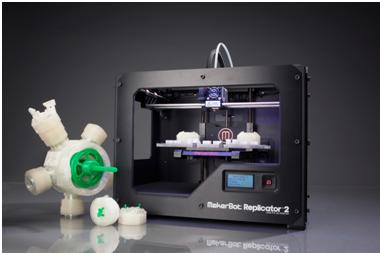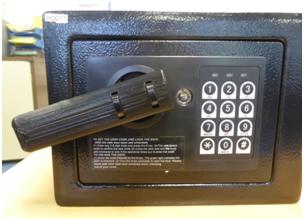By Paul Doyle, ACCESS, Research and Development Manager – Hereward College.
We’ve all seen Captain Kirk (showing my age here) ask a machine for a drink or tasty morsel and low and behold as if by magic out it pops. The idea of machines that can make things from scratch in their entirety has been a favourite subject for the Science Fiction community for decades. However, machines that can make whole things including complex and moving parts have already been in existence since the eighties.
Why haven't we seen them?
Because they tended to be the very expensive playthings of the engineering community, specifically those responsible for development and prototyping. Artefacts as diverse as jewellery designs or jet engine components can be fabricated without the need for complex machining or other production processes, reducing development time and subsequently, cost.
And this technology is? Additive manufacturing sound familiar? No? Then how about 3D printing? The two concepts are actually one and the same. Additive manufacturing or 3D printing is a process of making a three-dimensional solid object of virtually any shape from a digital model.
3D printing is achieved using an additive process, where successive layers of material are laid down in different shapes. 3D printing is also considered distinct from traditional machining techniques, which mostly rely on the removal of material by methods such as cutting or drilling (subtractive processes).

Why all the fuss now?
Recently a number of low cost 3D printer start-up companies have begun to sell their lower cost (£1,500 - £3,000) products to an eager community of makers and tinkerers (people usually inhabiting garden sheds), popular examples are the Makerbot and the 3D Systems products.
Big names like Amazon and Staples are gearing up to offer “Bureau Services” where you can send in your design and they print it for you, very much like having your photos developed. The idea that you can manufacture things at home is an appealing one for a number of reasons including for example; if the catch on your washing machine breaks, if you have the right file to hand you can print out a replacement. Certain aspects of DIY become a matter of printing off parts and no more hunting through on line catalogues or super-gluing your fingers together.
Inevitably and encouragingly, as with any new product or service some people are beginning to explore how 3D printing can be used to help people with disabilities. One such example is a project that is underway in Coventry involving academic staff from the University of Warwick and staff and students at Hereward College (a specialist college for disabled students).
The Engaging Young People in Assistive Technology projects aims to raise the profile of STEM (Science Technology Engineering and Maths) subjects amongst the student population at Hereward.
Nationally, there is not an appetite for these subject areas and this is also the case amongst the disabled student community. The use of 3D printing is an attempt to demonstrate to student show STEM is relevant to them, by enabling them to design and create solutions to their own problems.
To date, Hereward students have collaborated on designing; a bespoke fork for someone with very limited hand function; an accessible handle for a medication safe; a mounting for an iPod based communication aid and perhaps most importantly, a stopper that stops straws from moving in beer bottles!


Ordinarily it has been the students’ experience that the provision of assistive technology has “happened to them” whilst they remained passive recipients. The project is succeeding as it enables students to start engaging in discussions about issues that are very important to them and then do something about it in a short time span. In addition if it isn’t right first time, the design can be tweaked and a new version created quickly which is not what most users of assistive technology are used to.
Enabling Hereward students to develop their own solutions lead staff at Hereward to explore the proposition that this approach has wider implications for the disabled community as a whole.
To that end, it has been proposed that a learning programme be created after the project has finished in 2014 to help teach disabled people how to use 3D design, scanning and printing technologies to develop their own bespoke solutions.
A user group that might benefit from such a programme are those with spinal cord injuries. For them the use of 3D printing has a potential to alleviate the “curse of Velcro” of which many with impaired hand function are familiar. The years of strapping knives, forks, pens or whatever to oneself in order to fabricate a “dibber” the A Team would be proud of might just be coming to an end.
Another encouraging aspect to the emerging 3D printing community is that many designs are shared freely through sites like the quirkily named 'Thingiverse' adopting the principles of the Open Source community.
People are already sharing designs to help with aspects of daily living and this altruistic approach means once a good idea appears, others may want to improve or adapt it allowing for the development of products that really meet the needs of the user.
For general enquiries
0808 291 3524
Or we can call you back at a time of your choice
Our opening hours are Monday to Friday 8am to 6pm (excluding Public Holidays).
